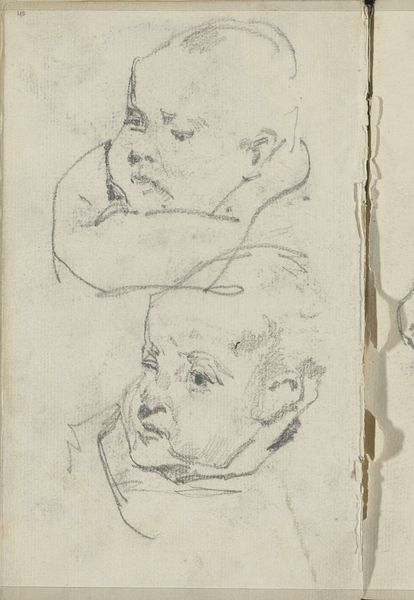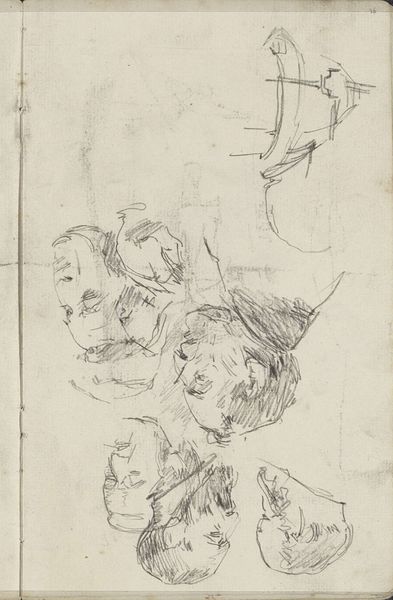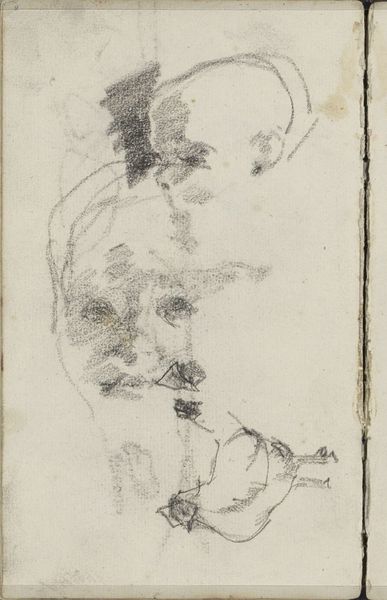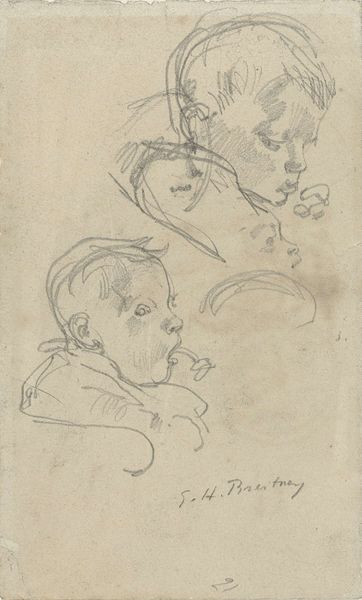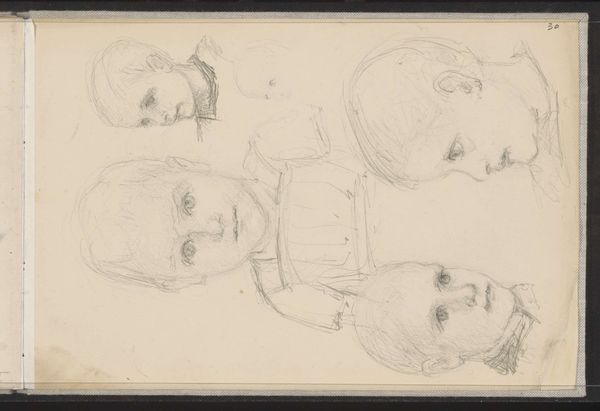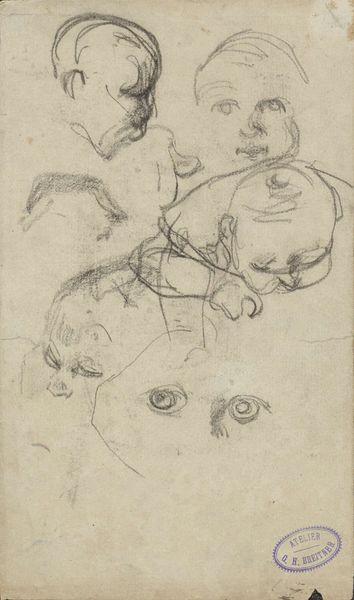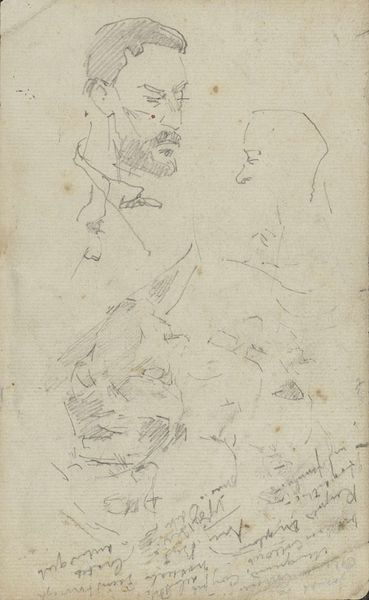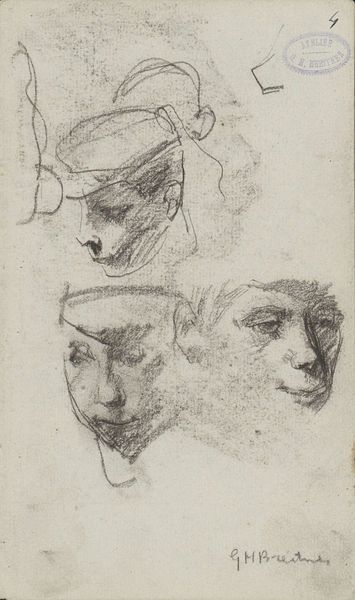
drawing, paper, pencil
#
portrait
#
drawing
#
amateur sketch
#
light pencil work
#
quirky sketch
#
dutch-golden-age
#
impressionism
#
pencil sketch
#
paper
#
personal sketchbook
#
idea generation sketch
#
sketchwork
#
detailed observational sketch
#
pencil
#
sketchbook drawing
#
sketchbook art
#
realism
Copyright: Rijks Museum: Open Domain
George Hendrik Breitner made this study sheet of heads with a pencil. Sketches like this offer a glimpse into the artist's process, but also reveal the place of academic training in the production of art. In the Netherlands, during the late 19th century, art academies emphasized the importance of studying the human form, and artists like Breitner would have spent countless hours practicing drawing faces and figures. But, the image also hints at how artists were beginning to break away from these traditions. While the sketches are clearly rooted in academic practice, there's also a sense of experimentation and informality. Breitner seems to be more interested in capturing the essence of his subjects than in creating a perfect likeness. This shift reflects a broader trend in the art world at the time, as artists began to explore new forms of expression and challenge the established norms of the art world. Understanding such shifts requires an art historian to consider the training that artists received, and the institutional structures that determined what kind of art was valued.
Comments
No comments
Be the first to comment and join the conversation on the ultimate creative platform.

